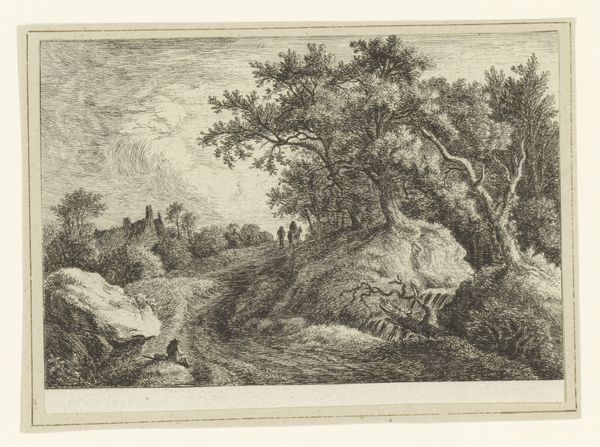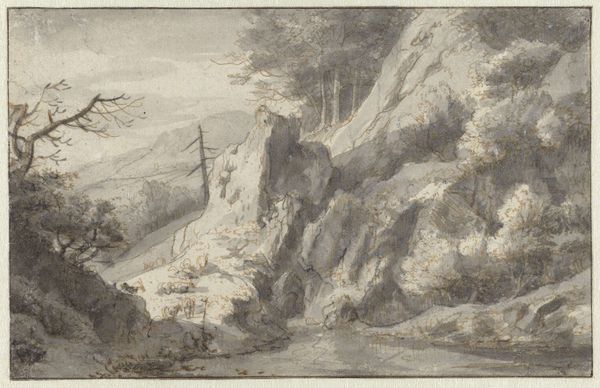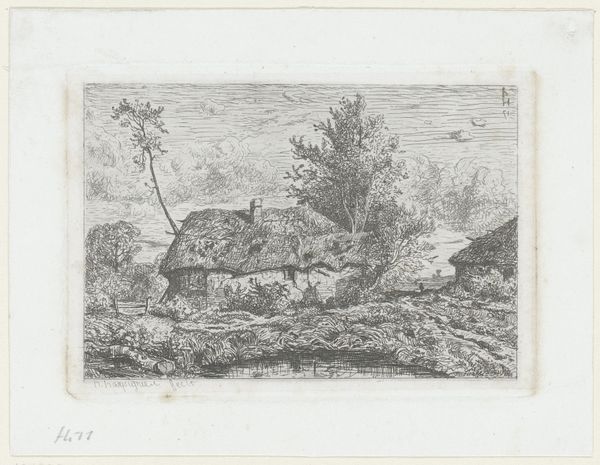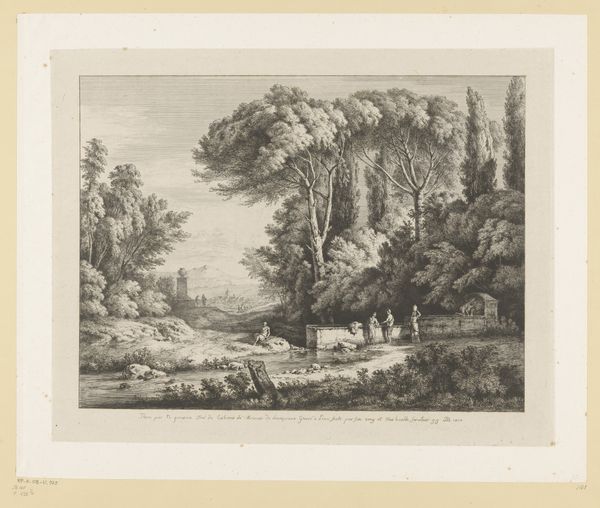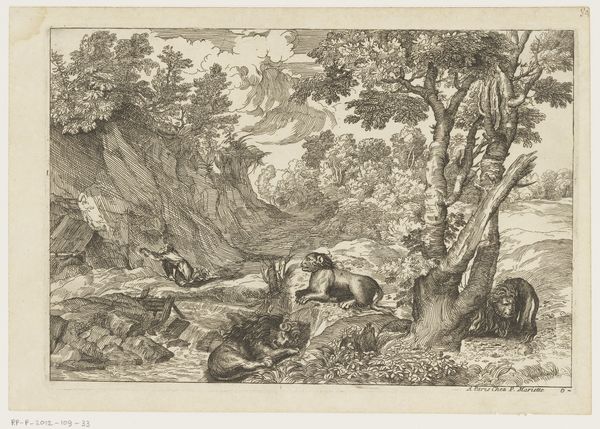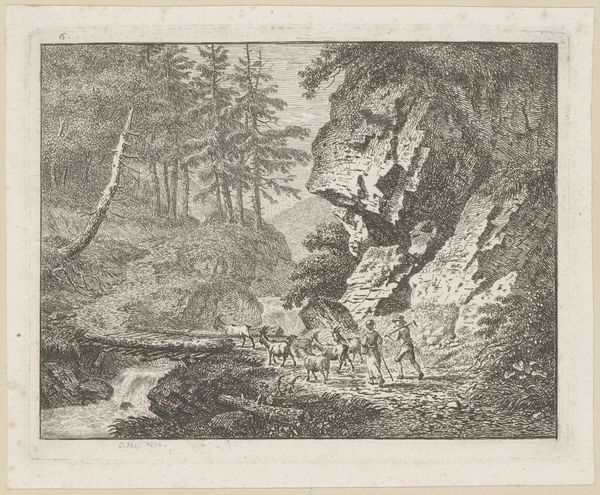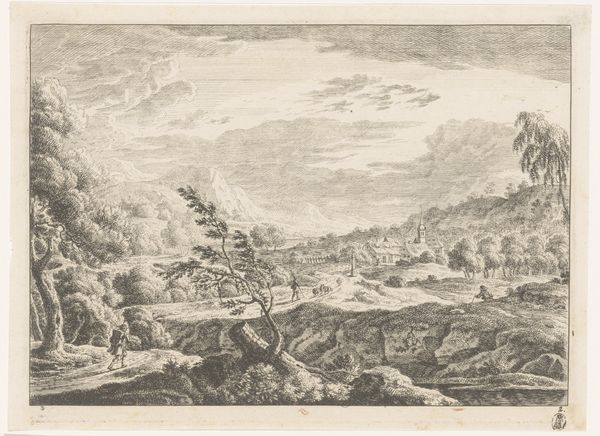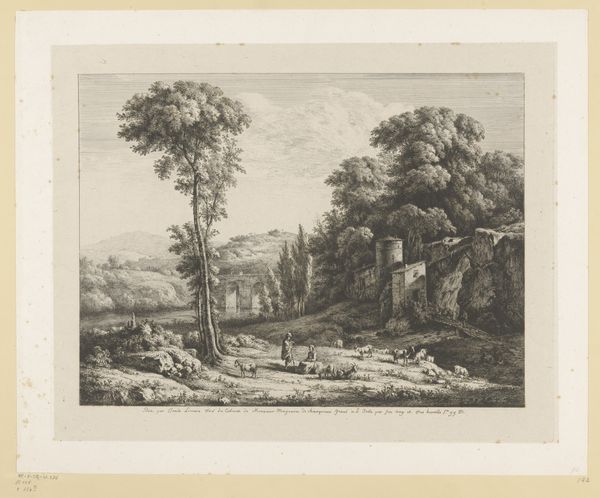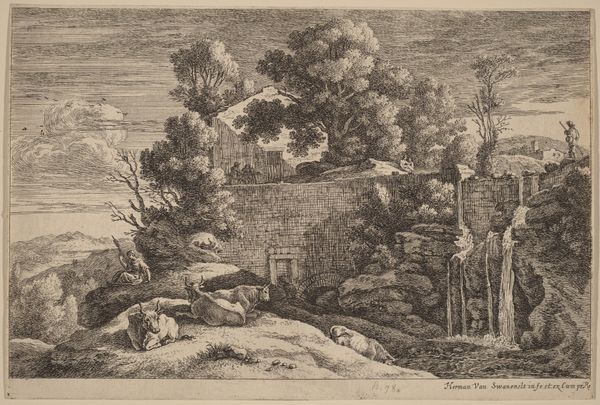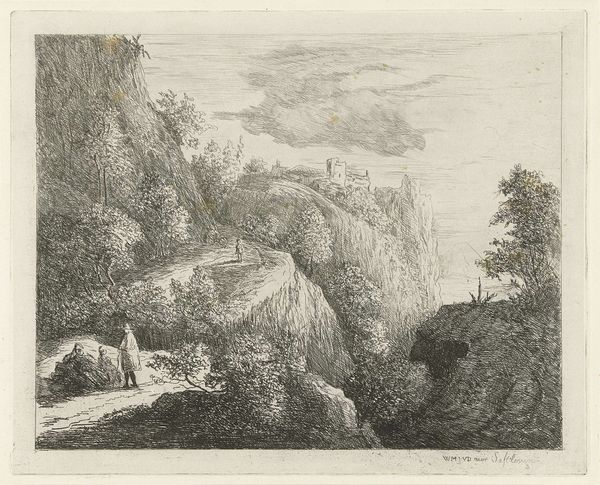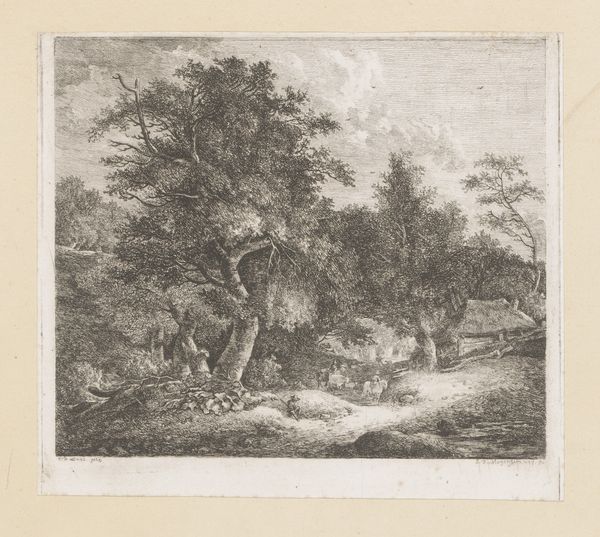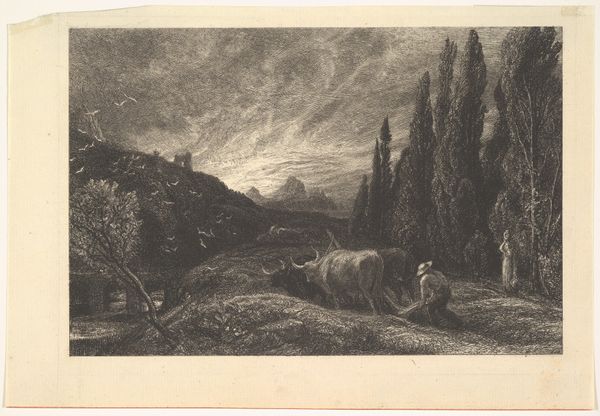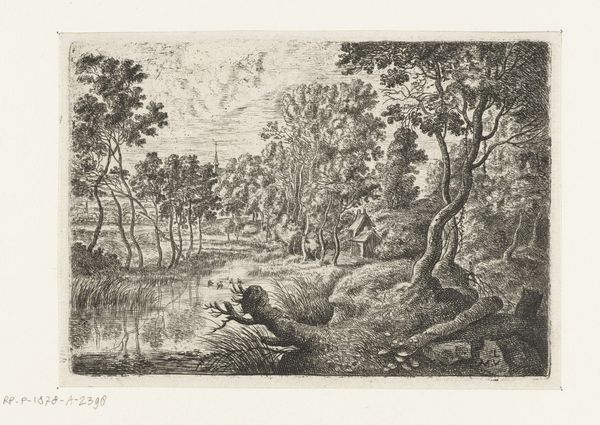
print, etching
#
baroque
#
dutch-golden-age
# print
#
etching
#
old engraving style
#
landscape
#
pencil drawing
Dimensions: height 122 mm, width 181 mm
Copyright: Rijks Museum: Open Domain
Editor: So, this is "Landschap met kapel," or "Landscape with Chapel," from the 17th century, an etching by J. Roemer housed in the Rijksmuseum. It feels quite intimate, even though it depicts a vast landscape. The detail in the etching is amazing. What stands out to you in this piece? Curator: From a formalist perspective, observe the linear quality achieved through the etching technique. Note how line is used to define form and space, creating texture and suggesting depth. What structural elements define the visual experience, would you say? Editor: Well, the path leading the eye towards the chapel, definitely. And how the cluster of the tree and rock mirrors the chapel on the right... a sense of balance? Curator: Precisely. That balance introduces a visual dialogue. Now, consider the deployment of light and shadow. How does the artist manipulate value to model the landscape? Are areas more heavily worked than others, and if so, to what end? Editor: It seems like the foreground is much darker, with the dense lines, creating a strong contrast that makes the background feel lighter, almost ethereal. Curator: An apt observation. It's worth noting how Roemer used light and shadow as compositional tools, organizing the elements within the pictorial space, achieving depth and focus. Each mark, strategically placed, contributes to the totality. Does contemplating this formal structure reveal deeper truths, perhaps about landscape's relationship to the sublime, as has been previously theorized? Editor: It is truly all in the composition, how the lines create so much more than what’s immediately visible. I see how each element, line, and shadow has a defined purpose. Curator: Indeed. Focusing on the visual architecture refines our understanding.
Comments
No comments
Be the first to comment and join the conversation on the ultimate creative platform.
